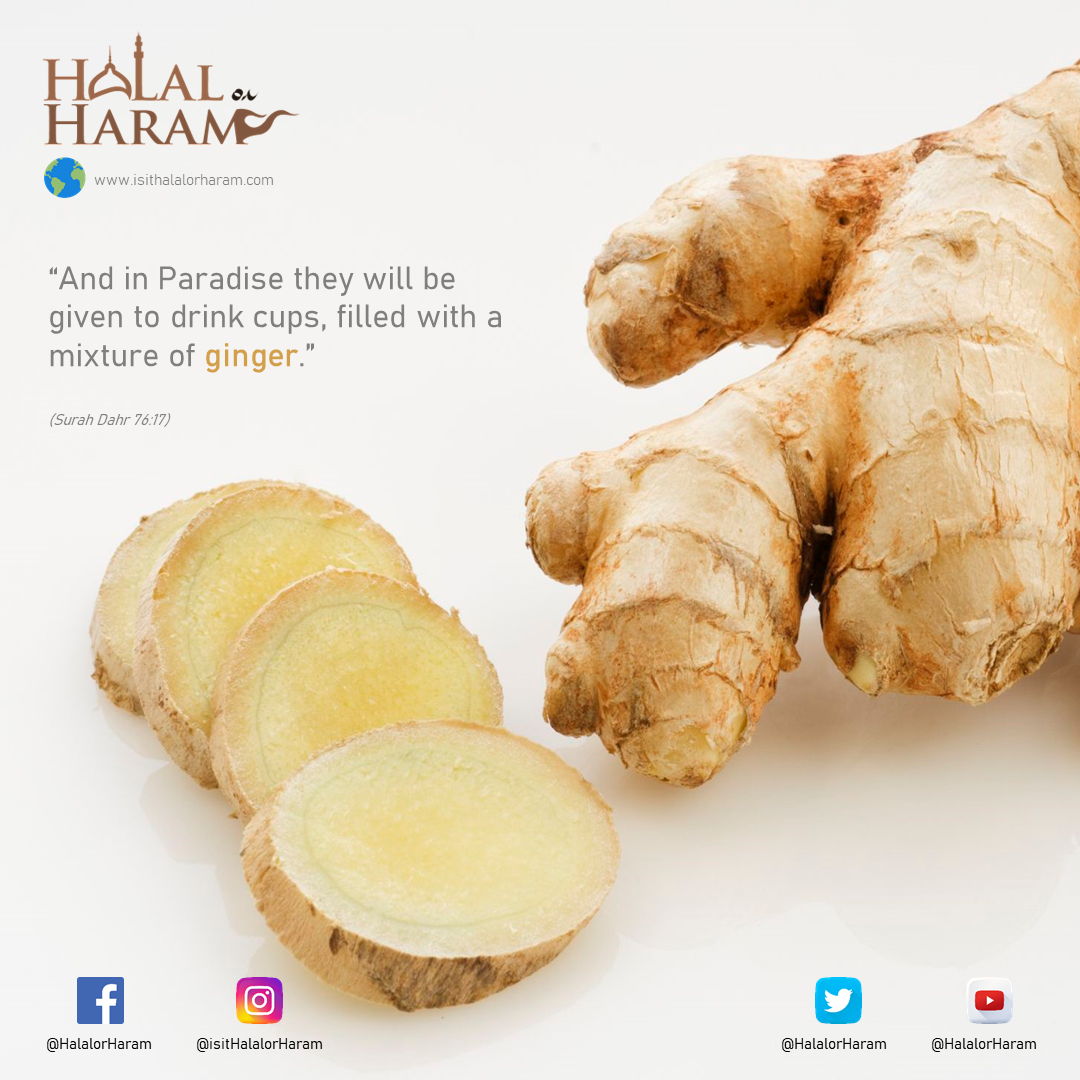“And in Paradise they will be given to drink cups, filled with a mixture of ginger.”
(Surah Dahr 76:17)
Please do remember to check our Youtube Channel and subscribe to it.
Ginger was cultivated and used as a spice and medicine in India and China, before historical records even begin. The earliest medical texts of both countries extensively discuss the therapeutic uses of the spice, both in fresh and dried form.
Chinese texts from the fourth century BC describe ginger as a remedy for treating stomach issues, nausea, diarrhea, cholera, toothaches, bleeding and rheumatism. Chinese herbalists also use the herb to treat various respiratory conditions, including coughs and colds. In the fifth century, Chinese sailors were using ginger’s vitamin C properties to treat scurvy on long voyages.
In India, Ayurvedic texts consider ginger to be one of the most important herbs available, to the extent of describing it as an entire medicine chest in itself. Ayurvedic practitioners prescribe ginger as a powerful digestive aid since it fuels digestive fire, whets the appetite, and clears the body’s micro-circulatory channels. This helps to improve the assimilation and transportation of nutrients to targeted body tissues. Ginger is also used in Ayurveda as a remedy for joint pain, nausea and motion sickness.
It has been used as a digestive aid for thousands of years by ancient cultures. Its carminative properties promote the elimination of intestinal gas to prevent bloating and flatulence, while its intestinal spasmolytic properties relax the gastrointestinal muscles to soothe an upset stomach.
Eating slices of ginger sprinkled with salt before meals can increase saliva flow to aid digestion and prevent stomach issues. It is also helpful to drink ginger tea after a large meal to reduce bloating and flatulence. If your stomach problems are more severe, you can also take ginger to help alleviate the various symptoms of food poisoning.
It is frequently recommended to treat dyspepsia (chronic indigestion), provide relief from colic in children, and help in the treatment of bacteria-induced diarrhea.
![]()

